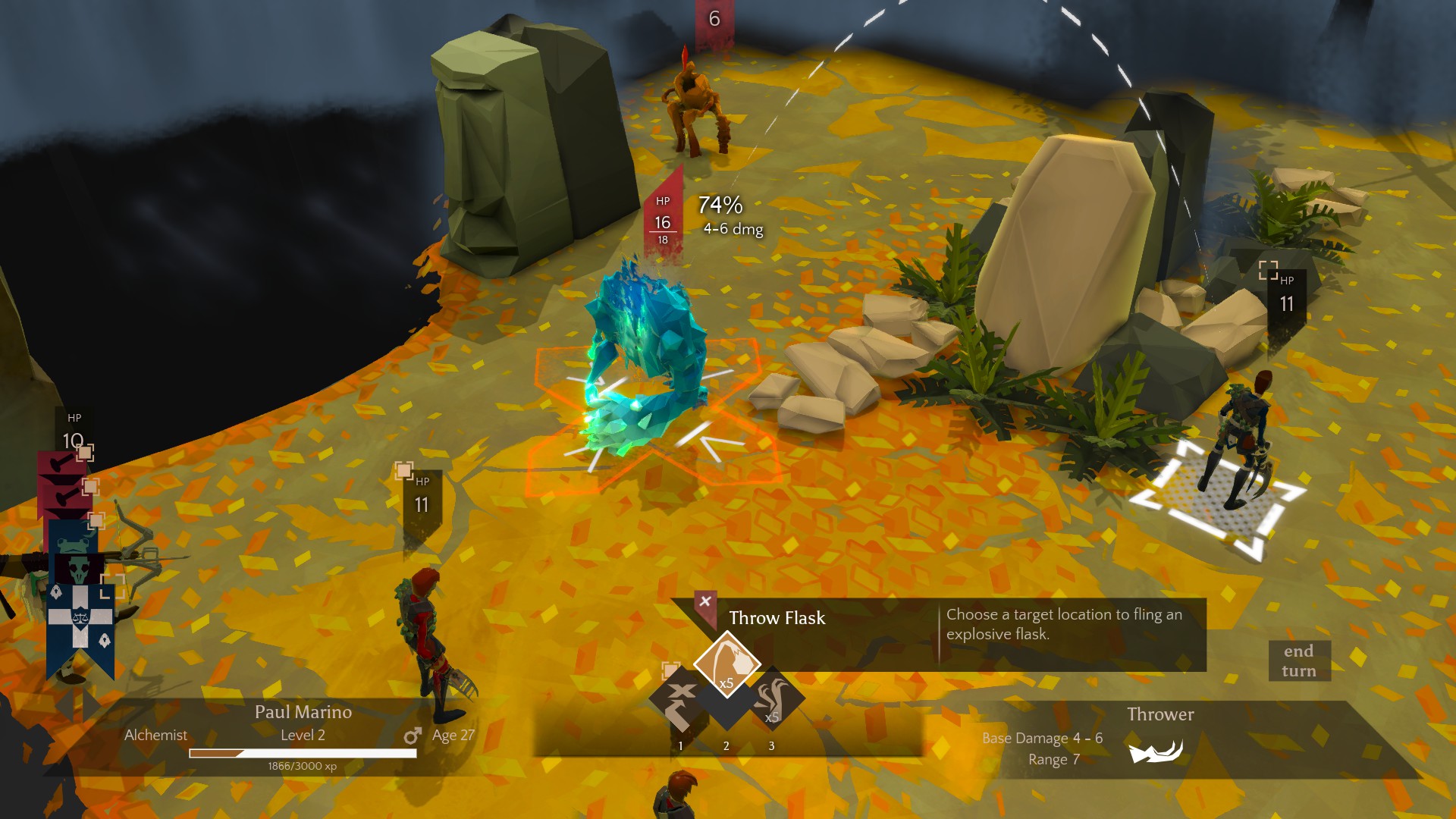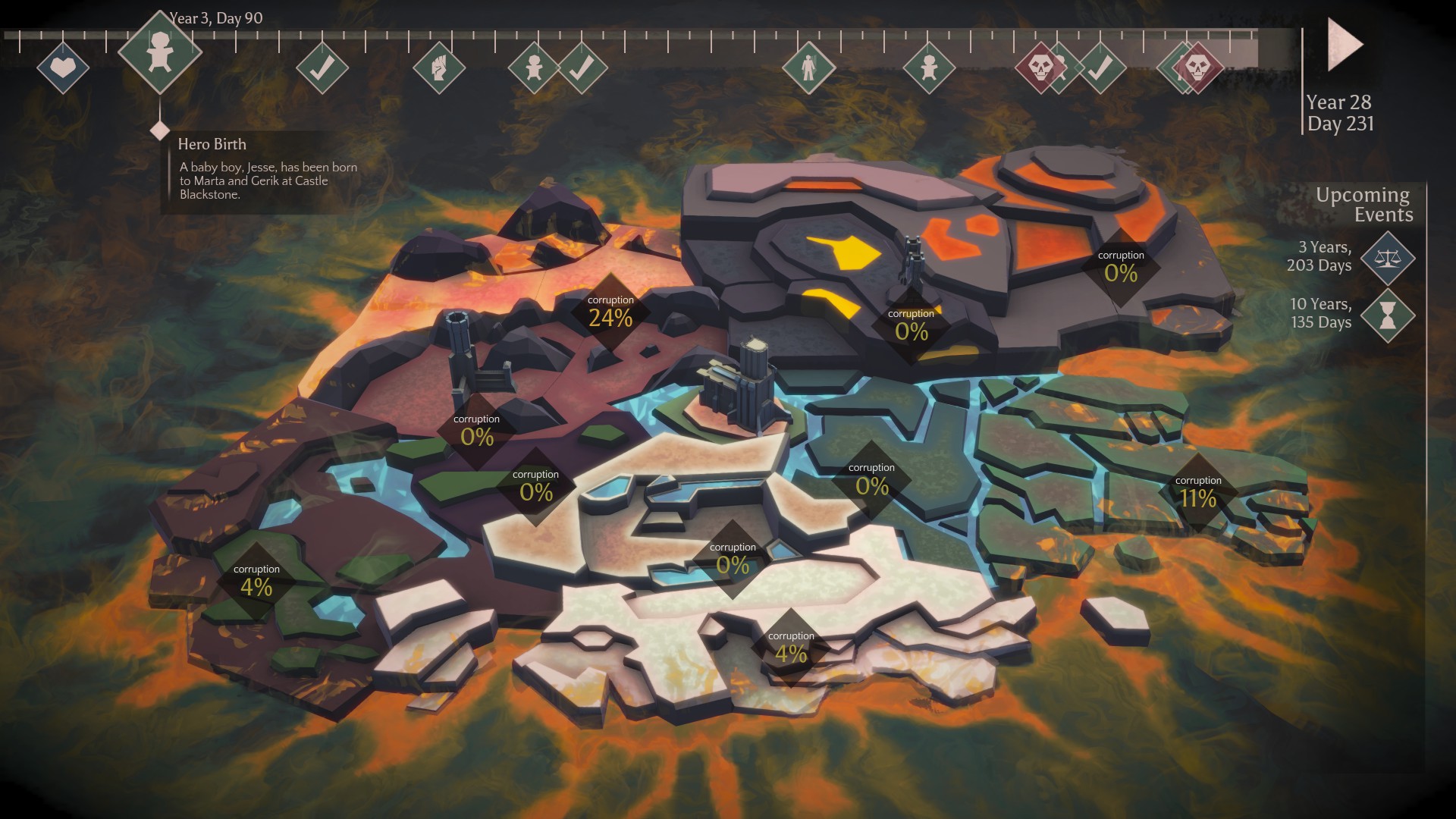Massive Chalice hands-on: emotional turn-based strategy

Natalie Meilk was out of explosive flasks, but I was confident she could kill the last Lapse, a ranged spectral enemy, with her jai alai-like curved blade. She dealt only two points of damage with an unlucky glancing blow, but that's okay. Her sister Roanoke was nearby, and she had a few flasks left. Roanoke had a 52 percent chance of hitting the target, which is risky, but with my free throw ability, I could take two shots. The first missed the Lapse and hit Natalie right in the head. Surely, it wouldn't happen again, I thought, as I took another shot and accidently killed my dear sister at the age of 39.
Massive Chalice is a difficult turn-based strategy game, and probably the most mechanically complex game Double Fine has produced since Brutal Legend, but it's the emotional impact of these moments that hooked me.
When I play XCOM, I get attached to my veterans—I want them to make it to the finish line. In Massive Chalice, I know that won't happen. The war against the Cadence monsters drags on for centuries, and while death will come for all my characters either naturally or at the hands of the enemy, I hope to at least keep their memory alive by seeing their heirs take the family sigil into battle again.

Family ties
Keeping family legacies alive requires planning generations in advance, building the training grounds and researching the equipment I need to survive increasingly difficult Cadence attacks. Most importantly, it requires playing cupid. House Meilk will live on only if I install Roanoke as Regent of a province in The Nation, and find her a nice and virile husband. It'd be great if he had some good abilities to pass on to the children, perhaps a Hunter with a double shot ability, but really it's the Meilks' superb Alchemist experience I need.
Like the best games in the genre, Massive Chalice's tactical layer feels like a deadly chess match where I don't want to sacrifice even a single piece, though it's not as complex as XCOM or Xenonauts. There are only three classes in the game, and while the stages are visually varied and all beautifully rendered with a low-poly aesthetic, as far as I could see, they're all flat. Cover and chokepoint placement still provide interesting layouts, but it has none of the verticality I enjoyed in XCOM.
Massive Chalice has all the tension of the move, then attack combat typical in turn-based strategy games, and it elevates even further in some nefarious ways. Wrinklers, for example, will target your oldest characters first, and each hit from their scythe-like limbs will instantly age that character by five years. Lapses, meanwhile, will deduct experience points from your characters, and even knock them down levels, taking away special abilities in the process. It obviously hurts to see that hard-earned experience disappear in a moment, but it's also extremely dangerous because I learned to rely on the abilities they took away. Whether just in difficulty or emotionally, Massive Chalice always looks for a way to twist the knife. It's rare and great to play a game that raises the stakes so high.

Now that I've played Massive Chalice for a few hours and explored its strategic layer, I'm properly excited for the full release. It's a lot of little things that make the difference: unique sigils and character names, watching them age and breed, being incentivized to preserve bloodlines for their genes and special gear instead of just recruiting new heroes. It got me emotionally invested almost immediately, which is a recipe for tears because Massive Chalice is brutally hard at the moment.
Keep up to date with the most important stories and the best deals, as picked by the PC Gamer team.
As Project Lead Brad Muir told us in an interview, the team is focused on balancing now, so hopefully I'll be able to defend The Nation on an easy mode when the game is officially released. Otherwise, its multi-generational ideas for the turn-based strategy genre already feel fully baked, addictive, and ready to devour in marathon play sessions.

